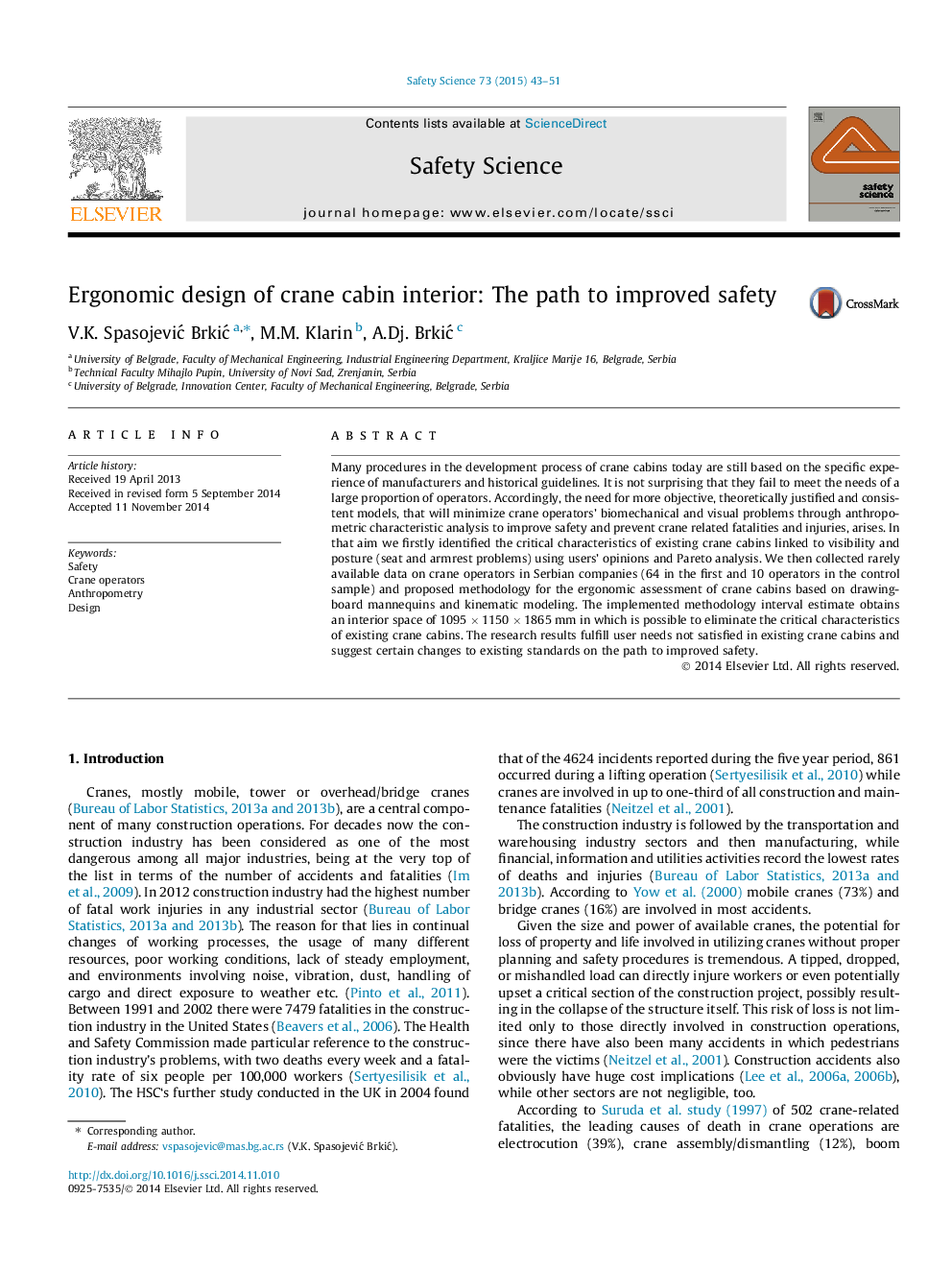| Article ID | Journal | Published Year | Pages | File Type |
|---|---|---|---|---|
| 6976025 | Safety Science | 2015 | 9 Pages |
Abstract
Many procedures in the development process of crane cabins today are still based on the specific experience of manufacturers and historical guidelines. It is not surprising that they fail to meet the needs of a large proportion of operators. Accordingly, the need for more objective, theoretically justified and consistent models, that will minimize crane operators' biomechanical and visual problems through anthropometric characteristic analysis to improve safety and prevent crane related fatalities and injuries, arises. In that aim we firstly identified the critical characteristics of existing crane cabins linked to visibility and posture (seat and armrest problems) using users' opinions and Pareto analysis. We then collected rarely available data on crane operators in Serbian companies (64 in the first and 10 operators in the control sample) and proposed methodology for the ergonomic assessment of crane cabins based on drawing-board mannequins and kinematic modeling. The implemented methodology interval estimate obtains an interior space of 1095Â ÃÂ 1150Â ÃÂ 1865Â mm in which is possible to eliminate the critical characteristics of existing crane cabins. The research results fulfill user needs not satisfied in existing crane cabins and suggest certain changes to existing standards on the path to improved safety.
Keywords
Related Topics
Physical Sciences and Engineering
Chemical Engineering
Chemical Health and Safety
Authors
V.K. SpasojeviÄ BrkiÄ, M.M. Klarin, A.Dj. BrkiÄ,
